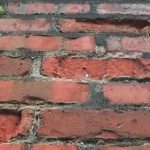The DIY Fix is reader supported. When you buy after clicking a link on our site, we may earn an affiliate commission.
Quarry tile floors are quite common in UK homes. They are generally found in older Victorian properties and are regularly installed in high traffic areas, such as kitchens, utility rooms and hallways.
As with many construction materials in older properties, quarry tile floors were designed to be breathable. It is highly likely they will not have a DPM beneath them and in many cases, they will be laid directly on the earth below.
The flooring will usually be bedded on lime mortar, which is another breathable building material, that is less common in more modern properties.

In recent times, many of these floors have been covered up with modern flooring, such as laminate, lino, carpet, and even more tiles.
One problem that can occur once the old floor is covered, is damp. The reason this happens, is moisture becomes trapped under the new flooring and it is unable to breathe.
It is also possible that damp could rise through the original flooring when uncovered.
So how can you stop damp on a quarry tile floor?
There are a few solutions when it comes to damp proofing a quarry tile floor. However, you should remember that these floors were originally designed to be breathable.
Any time you damp proof an old building material like this, you remove its breathable qualities. This suppresses moisture from freely passing through and evaporating away. As a result, the moisture that builds up, may find its way around your damp proofing solution, into other areas of flooring and the surrounding walls.
So, what are your options? Below are the most common solutions:
Option 1 – Restore the original tiles
In many cases, these quarry tile floors have been installed for many decades, or even hundreds of years. They may currently be in disrepair, but they can be restored and add amazing character to a property.
They are designed to be breathable, so using them as they were originally intended is likely to avoid damp.
If you have recently removed flooring laid on top of quarry tiles, it is quite likely you will find damp. This is not necessarily a serious rising damp issue. Instead, it is more likely, this is moisture trapped by the modern floor covering.
Simply allowing the floor to breathe and dry out should remove this problem. Following this you may need to carry out restoration work to bring the tiles back to their former glory.
You can see a great video of an old quarry tile floor being restored below:
Option 2 – dig the floor out and replace
If you intend to lay modern flooring, and you want a job that will stand the test of time, you should consider removing the tiles and digging out the floor beneath them. Following this you can install a new DPM and concrete floor, that follows current building regulations.
Digging up and relaying a new floor is obviously a big job, but it is the best solution for the long term. This is especially true if there is already a significant amount of damp.
A modern DPM will completely stop any instance of rising damp. It also means you aren’t stopping traditional building materials from breathing.
Option 3 – Apply a liquid DPM
Whilst this is not ideal, it can be a low-cost solution, which is easier than restoring old tiles, or completely digging out and relaying a new floor.
However, this option may not be the best solution in many circumstances. For example, if there is a significant problem with damp rising through your quarry tile floor, a liquid DPM will simply be covering over the problem.
In the future, you may have problems with moisture pressure building up below the DPM. This could cause your liquid DPM to fail, and the damp problem will return through your new floor.
Something else you should consider; is this will completely ruin the original tiles. So, if you do have future problems and the liquid DPM doesn’t work, you will no longer have the option to restore the original floor.
There is also the potential for the damp to migrate to other areas. This could include walls and skirting boards around the floor.
For this reason, it is often recommended that you apply the DPM to the surrounding walls, up to approximately 1m. This will require you to remove skirting boards and will need redecorating.
With all this in mind, a liquid DPM is more suitable for floors that you have no intention of restoring, which are only suffering with very minor damp issues.
Which solution is best for you?
The best solution will depend on a case-by-case basis. It is difficult to determine the best option without first inspecting the floor itself.
If you don’t have the relevant experience, you should seek the assistance of a professional. Ideally, you should find someone who has specific knowledge, of this exact job. Make sure to ask for references and examples of similar, successful work they have carried out in the past.
If you live in an area where quarry tiles are a common feature in properties, local flooring professionals will have come across this issue in the past. Therefore, it is highly likely they will be able to offer the best solution.
You can easily compare multiple flooring contractors in your area via online job sites. These sites offer some great deals and allow you to read previous customer reviews on local tradespeople.
Most companies will come out for a completely free quote, so even if you don’t hire them, they will give you a better idea of the best course of action.
Click here to get up to 5 quotes from local flooring contractors
Conclusion
When it comes to damp proofing a quarry tile floor, the solutions are unlikely to be simple. The best course of action is also very dependent on the specific circumstances.
The main problem you have, is quarry tiles use traditional, breathable building materials. These usually don’t play nice with modern, non-breathable building materials. For this reason, it is preferable to either restore with traditional methods. Or completely replace with modern methods.
However, there are some cases when the two can be combined and a suitable compromise can be found.
The most important thing to remember, is this is quite a specialist job and there is not a one size fits all solution. Therefore, it is advised to seek professional help, to avoid future issues.




